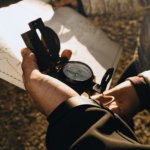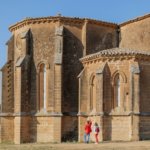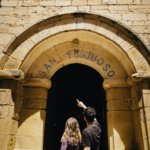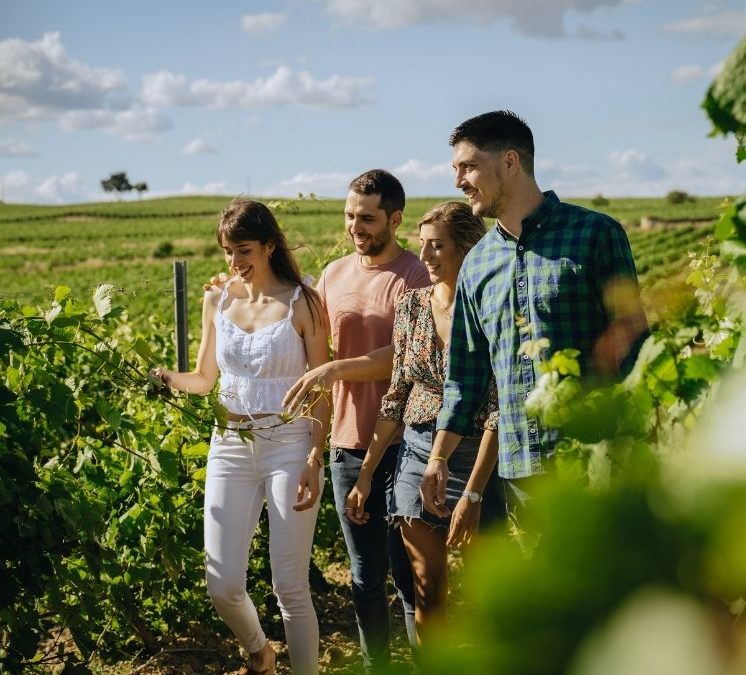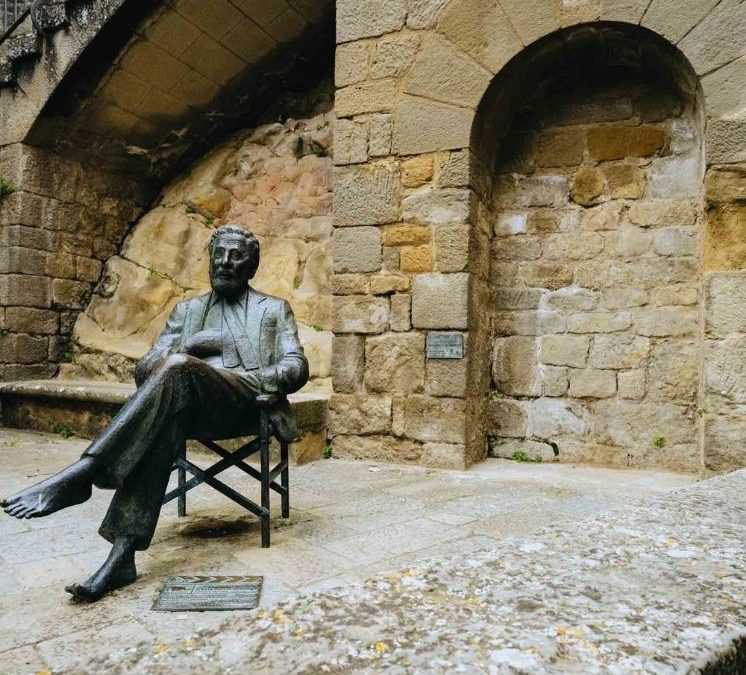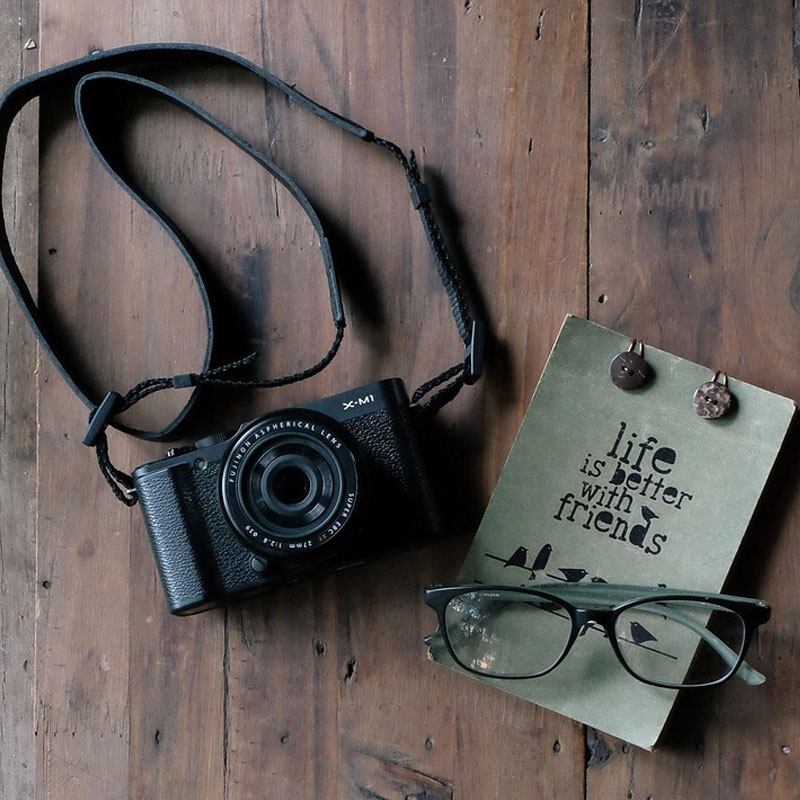This area is famous for the whimsical shapes created by its rivers in the limestone rocks, and it is well-known by adventurers and athletes. But it also houses excellent cultural and artistic treasures. Welcome to the best area of Aragón to see Gothic paintings.
At each of the stops on this page, there is a hidden treasure. Finding the treasure has varying levels of difficulty. We recommend that to hunt for the treasure, you download the free Geocaching app from https://www.geocaching.com/play, where you will find more information and some useful hints to help find the treasures. You can also see the level of difficulty of each location.
Good luck to everyone!
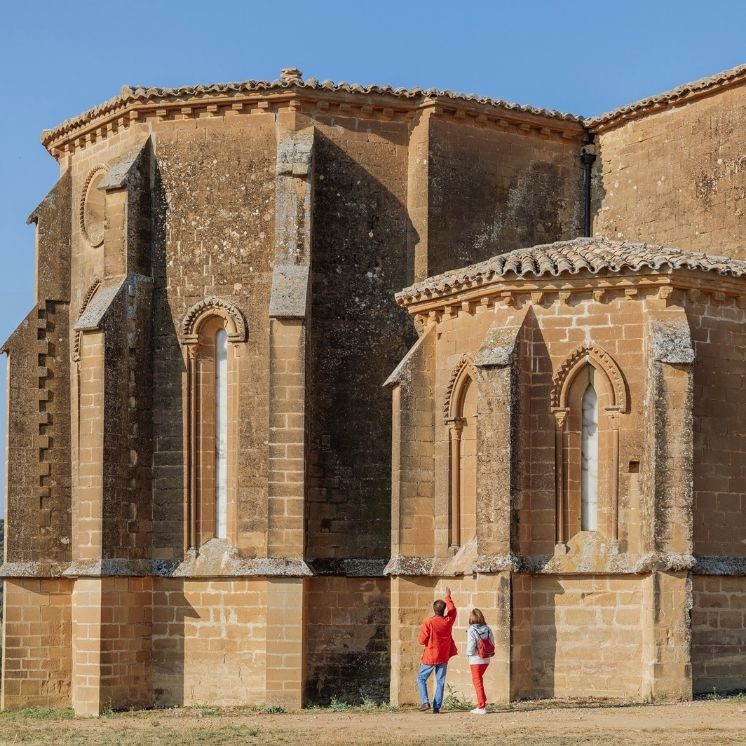
Alerts
– Necesario vehículo.
– Necesario llevar el móvil en todo momento.
– Recomendado descargar App de Geocaching (Google Maps podría ser una alternativa suficiente).
– Recomendado descargar el PDF de la ruta (disponible en «link a la ruta») por si nos encontramos en algún lugar sin cobertura poder seguir teniendo la información de la ruta.
– Se recorren unos kms en pista sin alfaltar pero en buen estado.
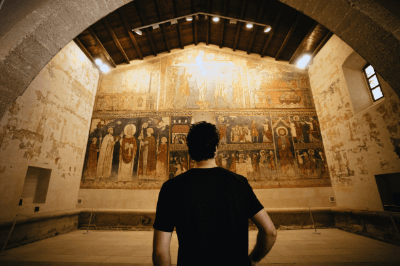
Treasure location
N 42° 09.943′ W 000° 04.600′.
Clue:
At ground level, twice. BIERGE: CHURCH OF SAN FRUCTUOSO
This is our first stop – the Church of San Fructuoso de Bierge. Although on the outside it is not the most beautiful building, the mural paintings inside are wonderful. In fact, some of them have been exhibited in the National Museum of Art of Catalonia, in New York and Canada. If you look at the crucifixion painting, you may notice something strange. Take your time to observe carefully. The Church of San Fructuoso de Bierge was built in the 13th century, and it was around the middle of that century that mural paintings began to be made. These paintings represent fragments of the lives of San Nicolás de Bari, San Juan Evangelista and San Fructuoso.
Do you notice something unusual about the artworks? Let us help you a little: If you look closely, the highest paintings in the Sanctuary are somewhat different from the ones below them. This is because two different painters, known as the first and second Masters of Bierge, created the paintings in this church. The first painted in a more archaic way, while the second painted with a Gothic-linear style and is more natural, with more movement. The painted elements are accompanied by inscriptions that identify what was painted, for example, the names of the Saints. The lineal style is remarkable for its subtlety. It is characterised, particularly in northern Spain, by undulating rhythms and a refined colour scale.
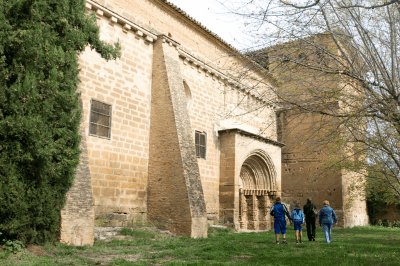
Treasure location
N 42° 09.373 W 000° 08.405
Clue:
Under the arch. CASBAS DE HUESCA: MONASTERY OF OUR LADY OF GLORY
This is a Cistercian female monastery founded in 1173 by Oria de Pallars, daughter of the Count of Urgell who was in charge of reconquering the town of Casbas a few years earlier. The last construction work on the church took place in the year 1208.
In the present day, part of the original structure of the walls is conserved, together with the abbey house, the tower of homage, the cloister and the chapter house. The temple also retains some of its original elements, despite the structural reforms it has undergone. It was an active convent until 2004.
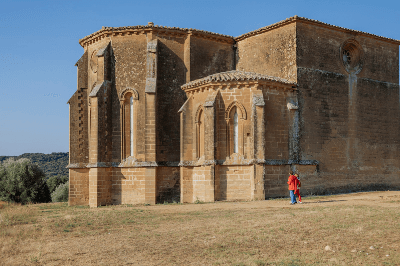
Treasure location
N 42° 08.850′ W 000° 11.712′.
Clue:
Tri-Arrows. IBIECA: CHURCH OF SAN MIGUEL DE FOCES
The church of San Miguel de Foces was built by Ximeno de Foces in 1249, to serve as a pantheon for his family. Later he donated it to the order of St. John of Jerusalem Hospital, whose soldier-monks were in charge of managing the entire monastic complex, and were committing to offering care and shelter to those who passed by.
From the outside, we can see how this church also falls between late Romanesque and Gothic eras, like the paintings at San Fructuoso. It is a shame that of all the buildings that formed this group, only the church has remained. However, we are lucky that it is the best preserved Gothic-linear church in Aragon.
Additionally, this church is similar to the cathedral of Valencia, believe it or not! Do you know why? Because Valencia’s cathedral was also financed by the Foces family and was built by the same builders.
And speaking of builders, it’s worth stopping to look at the stonemasons’ personal marks on the ashlars – it’s amazing how many different marks there are!
The gothic-linear murals around the tombs of Don Ximeno and Don Atho de Foces are a perfect example of this Gothic style with its French influence.
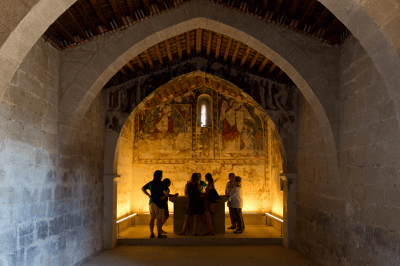
Treasure location
N 42° 12.026 W 000° 20.413.
Clue:
Look for the stone euro symbol. BARLUENGA: HERMITAGE OF SAN MIGUEL
The chapel was built next to the town cemetery in the second half of the thirteenth century, following a simple late-Romanesque style. The very well-conserved paintings inside date back to the XIV century. The wooden ceiling is also interesting, because it retains part of the polychrome decoration on the architectural elements.
The hermitage of San Miguel does not attract attention from the outside, but in its interior, we find the reason why it was declared a National Monument – its beautiful mural paintings. At this stage of the route, you are already a Gothic-linear expert, right? Observe these paintings depicting Saint Michael, the Last Judgment and the resurrection of the dead. What characteristics do you find that are similar to the rest of the paintings we have seen?
Related routes
Sos the walled town; the inaccessible town. A medieval beauty that retains its original layout and its defensive function. If you need peace, Sos is your kind of place.
7545
Low
Prepirineo Clandestino
exists thanks to:
exists thanks to:
